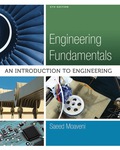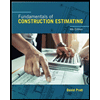
Concept explainers
Investigate the operation of various turbines and explain the operation of steam turbines, hydraulic turbines, gas turbines, and wind turbines.
Explanation of Solution
Turbine:
A turbine is also known as rotary engine that transforms the rotational energy from a fluid or air into a usable energy or work.
The turbine contains a generator, a shaft, and blades. The blade act as a barrier for fluid or air, when the blade moves the energy from the water or air is transferred to the rotor. When the rotor starts to rotate the shaft also rotates and transforms the
Impulse turbine:
Impulse turbine changes the flow path of high velocity fluid. The turbine spins and leaves the kinetic energy from the fluid flow as a result of the impulse. The pressure of the blades does not alter. The total pressure drop takes place in the stationary blades for the steam or gas turbine. The stationary blades is the part which takes place the total pressure drop in the steam or gas turbine.
The fluid pressure head is reformed to velocity head by accelerating the fluid with a nozzle. No pressure casement is required for impulse turbine. The Pelton wheels use the impulse turbine concept exclusively.
Reaction turbine:
The reaction turbine functions are based on the Newton’s third law of motion. The torque developed due to the turbine response to the fluid pressure. The pressure casement is essential for the turbine.
The turbine nozzles are united to the rotor. The Francis turbine and steam turbines are use the concept of reaction turbine. When the fluid leaving through the nozzles, it produces a reaction force on the pipes due to acceleration of fluid. It causes the rotor to change in the direction against to the direction of fluid. Steam turbines and Francis turbine are used by the concept of reaction turbine.
Operation of steam turbine:
The higher amount of mechanical power is produced by the steam turbine applying the less amount of steam. The wheels and blades are attached to the steam turbine rotor. The turbine blade extracts the energy from the steam. It is meant for the electricity production in the thermal power plants. The primary type of steam turbine is the condensing steam turbine.
Operation of hydraulic turbine:
The hydraulic turbine transforms the kinetic energy of the falling water into mechanical energy of rotation. It is used in hydraulic power plants. The modern hydraulic turbines are a form of fluid dynamic machinery of the jet and vane type operating on the principle of impulse or reaction turbine.
Operation of gas turbine:
In gas turbine the air is used as a working fluid. It contains three main components they are downstream turbine on the shaft, upstream rotating gas compressor, and a combustion chamber in the midst of the compressor and the shaft.
The compressor pulls the air into the engine, and push in to the ‘combustion chamber’. It creates the larger amount of pressure and temperature and expands through the turbine section, then the electricity has produced owing to the spinning of generator.
Operation of wind turbine:
Wind turbine works on the principle by which the wind is used to generate mechanical power or electricity. The propellers or blades get rotation while the wind energy strikes on the blades around the rotor. The shaft is connected with rotor and it induce the generator to produce electricity.
Conclusion:
Thus, the operation of steam turbines, hydraulic turbines, gas turbines, and wind turbines is explained.
Want to see more full solutions like this?
Chapter 4 Solutions
EBK ENGINEERING FUNDAMENTALS: AN INTROD
- P15.45 WP A stainless steel pipe (Figure P15.45) with an outside diameter of 2.375 in. and a wall thickness of 0.109 in. is subjected to a bending moment M = 50 lb ft and an internal pressure of 180 psi. Determine the absolute maximum shear stress on the outer surface of the pipe. M FIGURE P15.45 Marrow_forward10.72 What power must the pump supply to the system to pump the oil from the lower reservoir to the upper reservoir at a rate of 0.3 m³/s? Sketch the HGL and the EGL for the system. p=940 kg/m³ v = 10-5 m²/s Elevation 100 m Elevation 112 m L= 150 m Oil Steel pipe D = 30 cm Problem 10.72arrow_forwardL / 83° 28° $75°E M 202° Q2: The scanning process was completed from point J to point N. The direction of the straight line was LM and the angles of deviation are shown in the figure below. Find the direction of the remaining sides? Narrow_forward
- Q3: The scanning process was completed from point F to point G. The direction of the line Fl and the angles of deviation and interior are shown in the figure below. Find the direction of the remaining sides? Azimn = 60° F 52° 52° 72° R= 572.958/D ° T-R tan(A/2) • LC 2R sin (A/2) • E-R (sec(A/2)-1) • M-R (1-cos (A/2)) L= 10 A/D •C=2R sin(2D/2) • d=Dc/10 c' 2R sin (d/2) • Y= √√R2-X2-K • K= R2- K=R-M G H معادلات :مفيدةarrow_forwardPlease write me Background Reviews;arrow_forwardQ1/ The specific gravity of the soil is 1.41 percentage of water content by weight at field capacity and wilting point are 15% and 7% respectively calculate the equivalent moisture content as equivalent depth for 1.2m root zone : 1. at permanent wilting point 2. at field capacity 3. for ready available waterarrow_forward
- Kindy explain the pie chart percentage and give some related study and references about Value of travel time connected to the pie chartarrow_forwardConsider the specifications for an asphaltic concrete mixture and the results of a sieve analysis below. Coarse aggregates: Fine aggregates: Filler: 60% 35% 5% Percent of Weight of Aggregate or Filler Passing Sieve Designation Retained on Sieve Designation Coarse Aggregate Fine Aggregate Mineral Filler 3/4 in. (19 mm) 1/2 in. 6 1/2 in. (12.5 mm) 3/8 in. 15 3/8 in. (9.5 mm) No. 4 50 - No. 4 (4.75 mm) No. 10 20 1 No. 10 (2 mm) No. 40 (0.425 mm) No. 40 9 35 - No. 80 31 40 No. 80 (0.180 mm) No. 200 (0.075 mm) Total No. 200 - 33 - - 25 35 100 100 100 Determine the proportion of different aggregates to obtain the required gradation. Percent of Total Weight of Mixture Passing Sieve Designation Retained on Sieve Designation Coarse Aggregate Fine Aggregate 3/4 in. (19 mm) 1/2 in. (12.5 mm) 3/8 in. (9.5 mm) 1/2 in. 3/8 in. No. 4 No. 4 (4.75 mm) No. 10 No. 10 (2 mm) No. 40 No. 40 (0.425 mm) No. 80 No. 80 (0.180 mm) No. 200 No. 200 (0.075 mm) Total Need Help? Read It Mineral Filler Total 100arrow_forwardResults obtained from laboratory tests on a sample of RC-250 asphalt cement are given. Determine whether the properties of this material meet the Asphalt Institute specifications for this type of material; if not, note the differences. (For each specification, enter the minimum acceptab value in the same units as used in the test results.) • Kinematic viscosity at 140°F (60°C) = 230 centistokes • Flash point (Tagliabue open cup) = 89°F • Distillation test where distillate percent by volume of total distillate to 680°F (360ºC) • To 437°F (225°C) = 27% • To 500°F (260°C) = 69% • To 600°F (316°C) = 72% • Residue from distillation to 680°F (360°C) by volume percentage of sample by difference • Tests on Residue from Distillation: • Ductility at 77°F (25°C) = 92 cm • Absolute viscosity at 140°F (60°C) = 620 poises ⚫ Solubility = 90% Property Kinematic Viscosity = 74% Specification Test Results Were Specifications Met? centistokes 230 centistokes ---Select--- ✓ Flash Point °F 89°F…arrow_forward
- Problem 2 Two machines produce rivets for a factory job. The number of sub-standard rivets per hour by the two machines are random variables, denoted by X1 and X2. The bivariate PMF of X1 and X2, Px,x,(x1,x2), is given in the table below. X2=0 X2=1 X2=2 X2=3 X₁-0 0.07 0.05 0.02 0.01 X₁ =1 0.05 0.16 0.12 0.02 X₁ =2 0.02 0.12 0.17 0.05 X₁ =3 0.01 0.01 0.05 0.07arrow_forwardPlease provide a handwritten solution to the questionarrow_forwardPlease solve the question by hand with a detailed explanation of the steps.arrow_forward
 Engineering Fundamentals: An Introduction to Engi...Civil EngineeringISBN:9781305084766Author:Saeed MoaveniPublisher:Cengage Learning
Engineering Fundamentals: An Introduction to Engi...Civil EngineeringISBN:9781305084766Author:Saeed MoaveniPublisher:Cengage Learning
 Fundamentals Of Construction EstimatingCivil EngineeringISBN:9781337399395Author:Pratt, David J.Publisher:Cengage,
Fundamentals Of Construction EstimatingCivil EngineeringISBN:9781337399395Author:Pratt, David J.Publisher:Cengage, Sustainable EnergyCivil EngineeringISBN:9781133108689Author:Richard A. DunlapPublisher:Cengage Learning
Sustainable EnergyCivil EngineeringISBN:9781133108689Author:Richard A. DunlapPublisher:Cengage Learning



